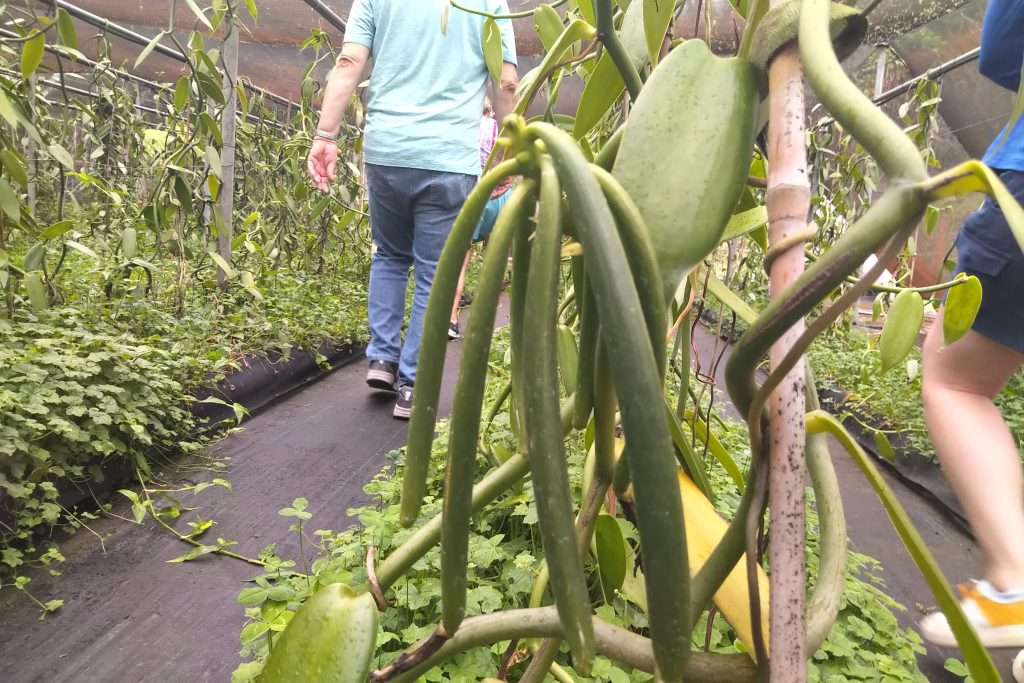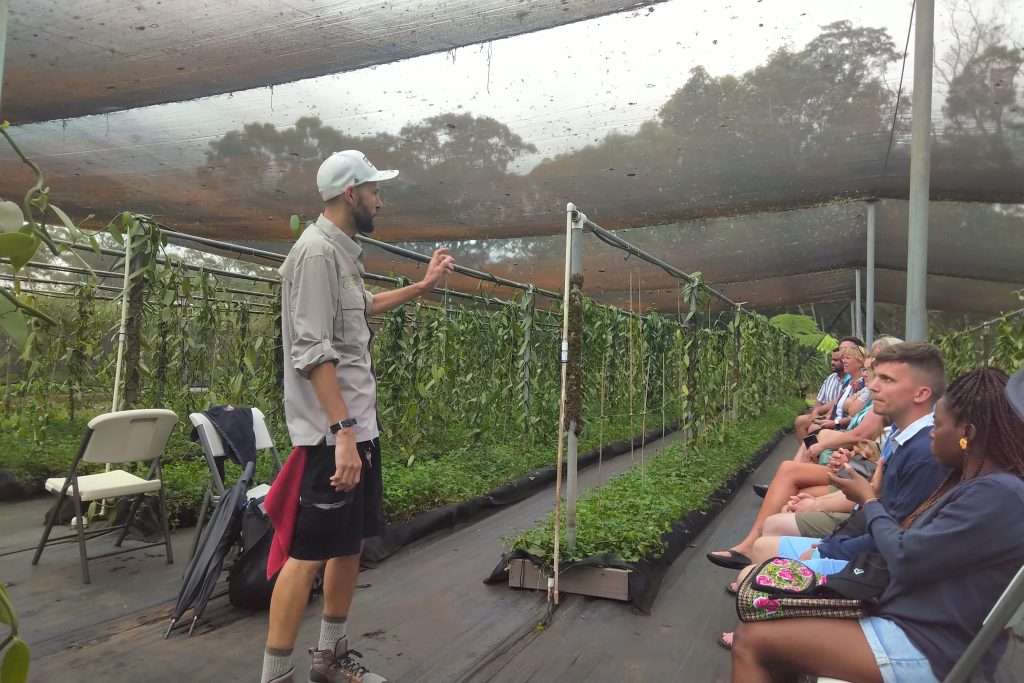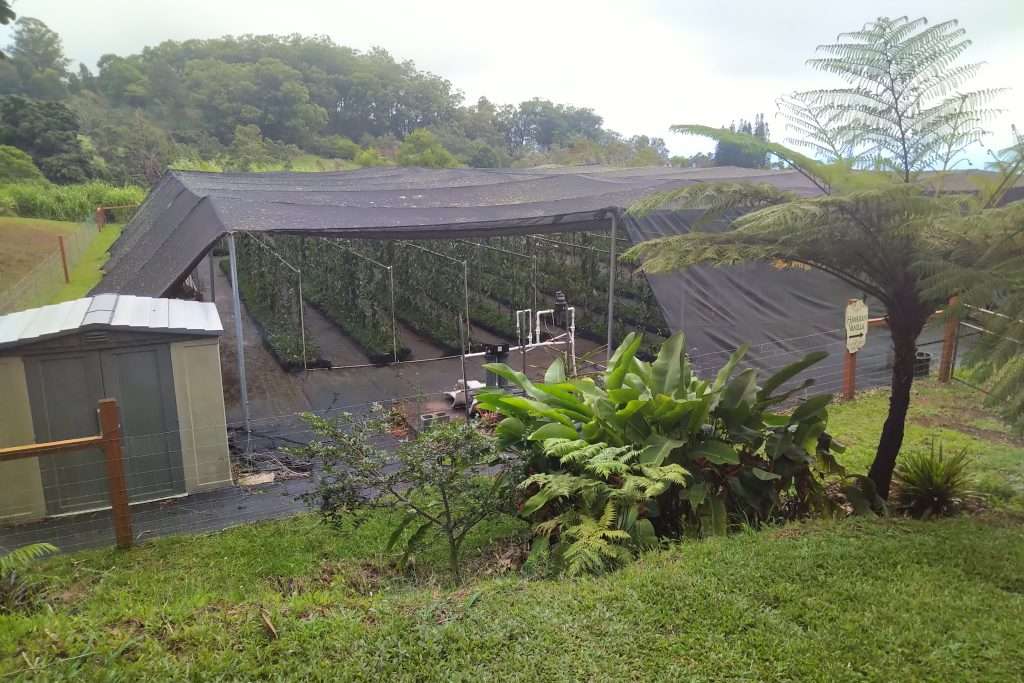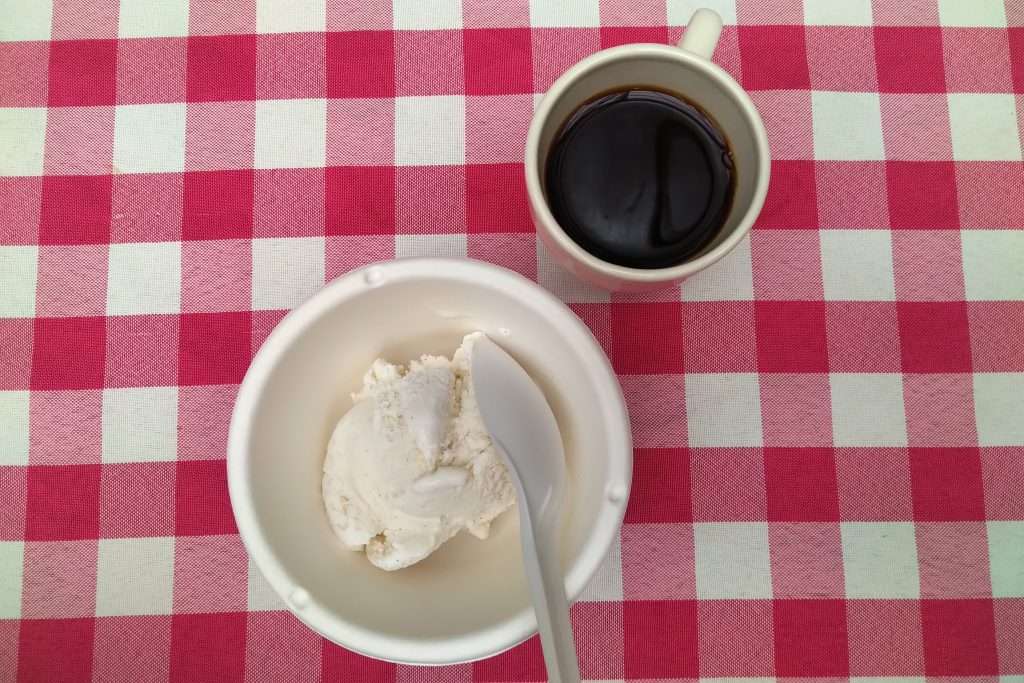The folks at the Hawaiian Vanilla Company want you to know that most companies use an exploited labor force to grow vanilla beans. But they don’t.
Vanilla is labor intensive. I found out just how much during a tour of the company’s farm in September, 2024. I learned more than I thought was possible from Zack, the self-proclaimed vanillavangelist, who convinced us to join the tour and lunch as we crossed the threshold of the little yellow building in Paauilo on the northwest side of the Big Island.

First, a Little Vanilla History
The origins of vanilla date back to Mexico and the Tontonac native people who used the beans for jewelry. French explorers unlocked the flavor of vanilla by placing the beans in a fat (fats, acids, and alcohols are actuators, meaning they release the flavor of the bean).
There are 3 varieties of vanilla used for the beans today: Plantifolia, Tahitian, and Pompona (which is not commercially grown). The farmers at Hawaiian Vanilla Co. propagate vines from germplasm or cuttings and grow them in coconut coir with mulch and a clover ground cover.

Fun Facts:
- The orchids require 160 inches of rain per year (Sorry, SoCal)
- The green vanilla bean is toxic
- The orchids have epiphytical roots will migrate and spread
- The largest vanilla orchid is in Costa Rica and covers 1 acre!

Labor Intensive
I’ve already mentioned that the flowers have to be hand pollinated. But to get a sense of the work involved, here’s a look at the process:
Farmers plant the orchids in year one. The vines flower in year 3 and yield about 40 flowers per plant. By year 7 the vines are producing 500 flowers per plant. Hand pollination is tricky because you have to perform the task during the 6-hour window when the vanilla vine is flowering – even at night. On top of that, the pollen is waxy, not dusty, so it requires more than a paintbrush. A 12-year-old enslaved boy in Tahiti invented the one-handed pollination method used today.
In order to encourage the vines to flower, farmers subject the orchid to stressors – cold, drought, and pruning. Since Hawaii is mostly warm and wet, they use pruning to stress the plants. After 11 years production drops and they pull the plants and start with fresh.

The beans take 9 months to mature, and once harvested they have to be dehydrated slowly over time. Traditionally, farmers would blanch the beans for 3 minutes to kill off pathogens, then roll them in burlap and lay them in the sun for 6 months. Now they dehydrate beans in a temperature-controlled shipping container in 2 months.
So those beautiful flecks in your ice cream took, at minimum, 4 1/2 years to get to your plate. The beans available through the Hawaiian Vanilla Company store cost more than your average store-bought variety. That’s because they pay humans a living wage to do the work.
When talking with a representative of the company at the local farmer’s market the next day, he said that when you smell other vanilla products, “You can almost taste the exploitation”. We had a good laugh and brought home beans and a bottle of extract for good measure.

